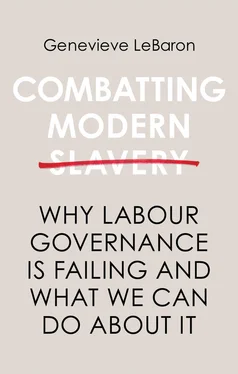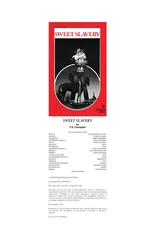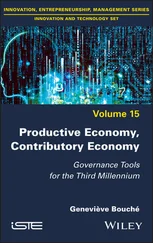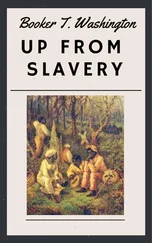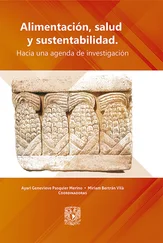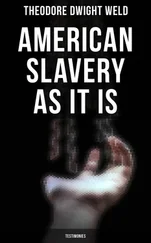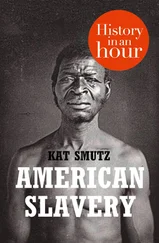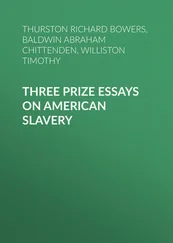Genevieve LeBaron - Combatting Modern Slavery
Здесь есть возможность читать онлайн «Genevieve LeBaron - Combatting Modern Slavery» — ознакомительный отрывок электронной книги совершенно бесплатно, а после прочтения отрывка купить полную версию. В некоторых случаях можно слушать аудио, скачать через торрент в формате fb2 и присутствует краткое содержание. Жанр: unrecognised, на английском языке. Описание произведения, (предисловие) а так же отзывы посетителей доступны на портале библиотеки ЛибКат.
- Название:Combatting Modern Slavery
- Автор:
- Жанр:
- Год:неизвестен
- ISBN:нет данных
- Рейтинг книги:4 / 5. Голосов: 1
-
Избранное:Добавить в избранное
- Отзывы:
-
Ваша оценка:
- 80
- 1
- 2
- 3
- 4
- 5
Combatting Modern Slavery: краткое содержание, описание и аннотация
Предлагаем к чтению аннотацию, описание, краткое содержание или предисловие (зависит от того, что написал сам автор книги «Combatting Modern Slavery»). Если вы не нашли необходимую информацию о книге — напишите в комментариях, мы постараемся отыскать её.
Combatting Modern Slavery — читать онлайн ознакомительный отрывок
Ниже представлен текст книги, разбитый по страницам. Система сохранения места последней прочитанной страницы, позволяет с удобством читать онлайн бесплатно книгу «Combatting Modern Slavery», без необходимости каждый раз заново искать на чём Вы остановились. Поставьте закладку, и сможете в любой момент перейти на страницу, на которой закончили чтение.
Интервал:
Закладка:
Contemporary governance efforts are failing to protect the world’s most vulnerable workers. And, the prospect of strengthening labour governance initiatives appears bleak. Powerful business interests are fighting to preserve the status quo of a retail-driven economy rife with labour exploitation by undermining the power of unions and workers. They are transforming public regulatory agencies and processes, and realigning the balance of power in civil society and in international organizations. These trends ultimately leave workers with less power, and fewer and less influential social forces fighting for their protection and rights. The key problem in engineering governance initiatives that will effectively strengthen and enforce labour standards in supply chains, therefore, is a political problem rather than a technical one.
Ultimately, as I argue in this book, labour exploitation cannot be eradicated by corporate fairytales. Since the start of this century, CSR has yielded few concrete improvements in terms of labour standards. As a growing body of evidence suggests, across several social and labour issue areas, there are serious gaps between CSR promises and actual outcomes. These gaps will only continue to grow as corporations continue to monopolize and seek to wrench ever more profit from their supply chains. CSR has failed.
In the absence of meaningful progress through industry-led solutions, a new approach is needed. Recognizing that corporations are actively creating and maintaining governance gaps regarding labour standards in supply chains should prompt policymakers, NGOs and unions to change their understanding of corporate accountability and liability. The growing evidence that core elements of global supply chains – including subcontracting, outsourcing, uneven value distribution, financialization and monopolization – fuels severe exploitation compels us to consider whether eradicating labour exploitation will require more profound change to contemporary business models than is generally considered in debates about supply chain governance. It also requires fresh and innovative thinking about how to protect workers in the twenty-first century. The critical challenges are how to transition from industry-driven to worker-driven solutions, and how to overhaul business models and the economy so that workers have more secure employment, living wages and the power to exert their fundamental rights – these are the factors that are well documented to protect workers from exploitation within supply chains.
Notes
1 See Rebecca Chao, ‘Dhaka factory collapse: How far can businesses be held responsible?’, Guardian, 16 May 2013, https://www.theguardian.com/sustainable-business/dhaka-factory-collapse-businesses-held-responsible; Jim Yardley, ‘Report on deadly factory collapse in Bangladesh finds widespread blame’, New York Times, 22 May 2013, https://www.nytimes.com/2013/05/23/world/asia/report-on-bangladesh-building-collapse-finds-widespread-blame.html; Amy Kazmin, ‘How Benetton faced up to the aftermath of Rana Plaza’, Financial Times, 20 April 2015, https://www.ft.com/content/f9d84f0e-e509-11e4-8b61-00144feab7de. 2 Reuters, ‘Rana Plaza collapse: 38 charged with murder over garment factory disaster’, Guardian, 18 July 2016, https://www.theguardian.com/world/2016/jul/18/rana-plaza-collapse-murder-charges-garment-factory. 3 European Centre for Constitutional and Human Rights, ‘Case report: OECD complaint against TUV Rheinland audit for Rana Plaza’, August 2018, https://www.oecdwatch.org/cases/Case_509/1732/at_download/file. 4 European Centre for Constitutional and Human Rights, ‘Complaint against TÜV Rheinland and TÜV India on possible violations of the OECD guidelines for multinational companies’, OECD Watch, May 2016, https://www.oecdwatch.org/cases/Case_509/1732/at_download/file. 5 Julfikar Ali Manik, Jim Yardley and Steven Greenhouse, ‘Bangladeshis burn factories to protest unsafe conditions’, New York Times, 26 April 2013, https://www.nytimes.com/2013/04/27/world/asia/bangladesh-building-collapse.html. 6 The Walt Disney Company, Disney Citizenship: Performance Summary 2012, pp. 8, 78, https://ditm-twdc-us.storage.googleapis.com/FY12DisneyCitizenshipSummary_FINAL_0.pdf. 7 Kazmin, ‘How Benetton faced up to the aftermath of Rana Plaza’. 8 See, for instance, Tim Bartley, Rules without Rights: Land, Labor, and Private Authority in the Global Economy (New York: Oxford University Press, 2018); A. Claire Cutler, Virginia Haufler and Tony Porter, eds., Private Authority and International Affairs (New York: State University of New York Press, 1999). 9 Genevieve LeBaron, Jane Lister and Peter Dauvergne, ‘Governing global supply chain sustainability through the ethical audit regime’, Globalizations 14/6 (2017), p. 959.10 Bartley, Rules without Rights, p. 46.11 For an overview, see Nicola Phillips, Genevieve LeBaron and Sara Wallin, ‘Mapping and measuring the effectiveness of labour-related disclosure requirements for global supply chains’, ILO Research Department Working Paper No. 32, June (Geneva: International Labour Organization, 2018).12 Genevieve LeBaron, Report of Findings: The Global Business of Forced Labour (Sheffield: SPERI, 2018), pp. 38–42.13 Marcus Stern, ‘The human cost hidden within a cup of coffee’, The Source, 19 January 2017, https://features.weather.com/thesource/.14 Kate Hodal, Chris Kelly and Felicity Lawrence, ‘Revealed: Asian slave labour producing prawns for supermarkets in US, UK’, Guardian, 10 June 2014, https://www.theguardian.com/global-development/2014/jun/10/supermarket-prawns-thailand-produced-slave-labour; Annie Kelly, ‘Thai seafood: Are the prawns on your plate still fished by slaves?’, Guardian, 23 January 2018, https://www.theguardian.com/global-development/2018/jan/23/thai-seafood-industry-report-trafficking-rights-abuses; Kate Knibbs, ‘Apple banned bonded servitude, but we aren’t sure about its rivals’, Gizmodo, 19 February 2015, https://gizmodo.com/apple-finally-banned-bonded-servitude-so-what-about-it-1686291768; Wesley Stephenson, ‘Have 1,200 World Cup workers really died in Qatar?’, BBC News, 6 June 2015, https://www.bbc.co.uk/news/magazine-33019838.15 See, for instance, Kevin Bales, Disposable People: New Slavery in the Global Economy (Berkeley: University of California Press, 2012 [2000]).16 John Bowe, Nobodies: Modern American Slave Labor and the Dark Side of the New Global Economy (New York: Random House, 2007), p. xx.17 Kevin Bales and Ron Soodalter, The Slave Next Door: Human Trafficking and Slavery in America Today (Berkeley: University of California Press, 2009).18 See openDemocracy’s Beyond Trafficking and Slavery hub for debates about the term ‘modern slavery’.19 Janie Chuang, ‘Exploitation creep and the unmaking of human trafficking law’, American Journal of International Law 108/4 (2014), pp. 609–649.20 Julia O’Connell Davidson, Modern Slavery: The Margins of Freedom (London: Palgrave, 2015).21 Neil Howard, Cameron Thibos and Genevieve LeBaron, ‘Why we need to move beyond trafficking and slavery’, openDemocracy.net, 3 October 2014, https://www.opendemocracy.net/en/beyond-trafficking-and-slavery/introduction/.22 ILO, Global Estimates of Modern Slavery: Forced Labour and Forced Marriage (Geneva: International Labour Organization, 2017); ILO, Profits and Poverty: The Economics of Forced Labour (Geneva: International Labour Organization, 2017).23 See, for instance, Michael Toffel, Jodi Short and Melissa Ouellet ‘Codes in context: How states, markets, and civil society shape adherence to global labor standards.’ Regulation & Governance 9 (2015), pp. 205–223; Greg Distelhorst and Richard M. Locke, ‘Does compliance pay? Social standards and firm-level trade’, American Journal of Political Science 62/3 (2017), pp. 695–711; Greg Distelhorst, Jens Hainmueller, and Richard M. Locke, ‘Does lean improve labor standards? Management and social performance in the Nike supply chain’, Management Science 63/3 (2017), pp. 707–728; Marieke Koekkoek, Axel Marx and Jan Wouters, ‘Monitoring forced labour and slavery in global supply chains: The case of the California Act on transparency in supply chains’, Global Policy 8/4 (2017), pp. 552–530; Richard Locke, F. Qin and A. Brause, ‘Does monitoring improve labor standards? Lessons from Nike’, Industrial and Labor Relations Review 61/1 (2007), pp. 3–31; Graeme Auld and Stefan Renckens, ‘Rule-making feedbacks through intermediation and evaluation in transnational private governance’, Annals of the American Academy of Political and Social Science 670/1 (2017), pp. 93–111.24 See, for instance, Burkard Eberlein, Kenneth W. Abbott, Julia Black, Errol Meidinger and Stepan Wood, ‘Transnational business governance interactions: Conceptualisation and framework for analysis’, Regulation & Governance 8/1 (2013), pp. 1–21; Graeme Auld and Stefan Renckens, ‘Rule-making feedbacks through intermediation and evaluation in transnational private governance’; Benjamin Cashore, Graeme Auld and Deanna Newsome, Governing Through Markets: Forest Certification and the Emergence of Non-State Authority (New Haven, CT: Yale University Press, 2004); Hamish van der Ven, Catharine Rothacker and Benjamin Cashore, ‘Do eco-labels prevent deforestation? Lessons from non-state market driven governance in the soy, palm oil, and cocoa sectors’, Global Environmental Change 52 (2018), pp. 141–151.25 See, for instance, Carlos Oya, Florian Schafer and Dafni Skalidou, ‘The effectiveness of agricultural certification in developing countries: A systematic review’, World Development 112 (2018), pp. 282–312; Michael J. Bloomfield and Philip Schleifer, ‘Tracing failure of coral reef protection in nonstate market-driven governance’, Global Environmental Politics 17/1 (2017), pp. 127–146.26 Matthew Potoski and Aseem Prakash, ‘Preface’, in Matthew Potoski and Aseem Prakash, eds., Voluntary Programs: A Club Theory Perspective (Cambridge, MA: MIT Press, 2009), p. viiii.27 See, for instance, Lars H. Gulbrandsen ‘Dynamic governance interactions: Evolutionary effects of state responses to non-state certification programs’, Regulation & Governance 8/1 (2012), pp. 74–92; Philip Schleifer, ‘Varieties of multi-stakeholder governance: Selecting legitimation strategies in transnational sustainability politics’, Globalizations 16/1 (2018), pp. 50–66; van der Ven, Rothacker and Cashore, ‘Do eco-labels prevent deforestation?’; Ketty Kortelainen ‘Global supply chains and social requirements: Case studies of labour condition auditing in the People’s Republic of China’, Business Strategy and the Environment 17 (2008), pp. 431–443.28 LeBaron, Report of Findings: The Global Business of Forced Labour.29 These include LeBaron, Report of Findings: The Global Business of Forced Labour; Andrew Crane, Genevieve LeBaron, Jean Allain and Laya Behbahani, ‘Governance gaps in eradicating forced labour: From global to domestic supply chains’, Regulation & Governance 13/1 (2017), pp. 1–21; Jean Allain, Andrew Crane, Genevieve LeBaron and Laya Behbahani, Forced Labour’s Business Models and Supply Chains (York: Joseph Rowntree Foundation, 2013); Genevieve LeBaron, Neil Howard, Cameron Thibos and Penelope Kyritsis, Confronting Root Causes: Forced Labour in Global Supply Chains (Sheffield: SPERI/openDemocracy, 2018); Genevieve LeBaron and Andreas Ruhmkorf, ‘Steering CSR through home state regulation: A comparison of the impact of the UK Bribery Act and Modern Slavery Act on global supply chain governance’, Global Policy 8/3 (2017), pp. 14–28; Genevieve LeBaron and Andreas Ruhmkorf, ‘The domestic politics of corporate accountability legislation: Struggles over the 2015 Modern Slavery Act’, Socio-Economic Review (2017), pp. 1–35.30 See David McNally, Another World Is Possible: Globalization and Anti-Capitalism (Winnipeg, MB: Arberiter Ring Publishing, 2006); Naomi Klein, No Logo: Taking Aim at the Brand Bullies (London: Picador, 1999).31 For the Life Magazine story, see International Labor Rights Forum, https://laborrights.org/in-the-news/six-cents-hour-1996-life-article. For Phil Knight’s quote, see China Labor Watch, ‘TED case study: Nike Shoes and child labour in Pakistan’, China Labor Watch, 4 November 2010, http://www.chinalaborwatch.org/newscast/66.32 Burhan Wazir, ‘Nike accused of tolerating sweatshops’, Guardian, 20 May 2001, https://www.theguardian.com/world/2001/may/20/burhanwazir.theobserver.33 See, for instance, Marcus Taylor, ‘Race you to the bottom … and back again? The uneven development of labour codes of conduct’, New Political Economy 16/4 (2011), pp. 445–462; Edna Bonacich and Richard P. Abbelbaum, Behind the Label: Inequality in the Los Angeles Apparel Industry (Berkeley, CA: University of California Press, 2000).34 Nike Statement on Forced Labor, Human Trafficking and Modern Slavery for Fiscal Year 2018, https://www.nike.com/gb/help/a/modern-slavery-act-disclosure.35 The Coca-Cola Company, Human and Workplace Rights 2017, https://www.modernslaveryregistry.org/companies/19434-the-coca-cola-company/statements/28265.36 Tata Global Beverages, Slavery and Human Trafficking Statement for Tata Global Beverages GB Limited for the Financial Year Ending 31 March 2018, p. 2, http://tataglobalbeverages.com/docs/default-source/default-document-library/slavery-and-human-trafficking-statement-2016-17.pdf?sfvrsn=0.37 Starbucks, ‘Responsibly grown coffee’, http://www.starbucks.ph/responsibility/ethical-sourcing/coffee-sourcing.38 As quoted in Andrew Crane, Vivek Soundararajan, Michael Bloomfield, Laura Spence and Genevieve LeBaron, Decent Work and Economic Growth in the South Indian Garment Industry (Bath: University of Bath, 2019), p. 29.39 Luc Fransen and Genevieve LeBaron, ‘Big audit firms as regulatory intermediaries in transnational labour governance’, Regulation & Governance 13/2 (2018), pp. 1, 8.40 Deloitte Consulting, The Freedom Ecosystem: How the Power of Partnership Can Help Stop Modern Slavery 2015, p. 5, https://www2.deloitte.com/insights/us/en/topics/social-impact/freedom-ecosystem-stop-modern-slavery.html#.41 Skype interview with Social Sustainability Manager, industry association, 20 December 2017.42 Consumer Goods Forum, ‘Forced labour eradication key topic at sustainable retail summit’, Consumer Goods Forum, 2 November 2016, https://www.theconsumergoodsforum.com/social_news_updates/forced-labour-eradication-key-topic-at-sustainable-retail-summit/.43 Global Business Coalition Against Human Trafficking, ‘Our Mission’, https://www.gbcat.org/.44 Oxfam, ‘Smallholder supply chains’, https://policy-practice.oxfam.org.uk/our-approach/private-sector/smallholder-supply-chains.45 Marks & Spencer, Modern Slavery Statement 2017/18, pp. 4, 7, 9, https://corporate.marksandspencer.com/documents/plan-a-our-approach/mns-modern-slavery-statement-june2018.pdf.46 Morrisons Supermarkets PLC, Modern Slavery Act Statement 2017/2018, p. 5, https://www.morrisons-corporate.com/globalassets/corporatesite/corporate-responsibility/documents/2018/morrisons_modern_slavery_act_2018.pdf.47 Free the Slaves, ‘Sponsors, donors, partners’, https://www.freetheslaves.net/about-us/sponsors-donors-partners.48 UN Global Compact, ‘Who we are’, https://www.unglobalcompact.org/what-is-gc.49 UN Global Compact, ‘Our participants’, https://www.unglobalcompact.org/what-is-gc/participants.50 Tesco PLC, Modern Slavery Statement 2017/18, p. 14, https://www.tescoplc.com/media/392433/modern_slavery_act.pdf.51 ILO, ‘Business Networks’, https://www.ilo.org/empent/areas/business-helpdesk/networks/lang--en/index.htm.52 Joel Bakan, The Corporation: The Pathological Pursuit of Profit and Power (New York: Simon and Schuster, 2005); see also Mark Achbar, Jennifer Abbott and Joel Bakan (dir), The Corporation (New York: Zeitgeist Films, 2003).53 LeBaron and Ruhmkorf, ‘Steering CSR through home state regulation’; LeBaron and Ruhmkorf, ‘The domestic politics of corporate accountability legislation’.54 See, for instance, Phillips, LeBaron and Wallin, ‘Mapping and measuring the effectiveness of labour-related disclosure requirements for global supply chains’.55 See Michael Bloomfield and Genevieve LeBaron, ‘The UK Modern Slavery Act: Transparency through disclosure’, E-International Relations, 21 September 2018, https://www.e-ir.info/2018/09/21/the-uk-modern-slavery-act-transparency-through-disclosure-in-global-governance/.56 CORE, Risk Averse? Company Reporting on Raw Material and Sector Specific Risks Under the Transparency in Supply Chains clause in the UK Modern Slavery Act 2015 (2017), pp. 4 and 8, https://corporate-responsibility.org/wp-content/uploads/2017/10/171003_Risk-Averse-FINAL-1.pdf; see also Ergon Associates, Modern Slavery Statements: One Year On (2017), https://ergonassociates.net/wp-content/uploads/2018/01/MSA_One_year_on_April_2017.pdf?x74739.57 Interview with NGO representative, 7 December 2017, London.58 Interview with brand retailer, 12 July 2013, Seattle, USA.59 Gordon Lafer, ‘The legislative attack on American wages and labor standards, 2011–2012’, Economic Policy Institute Briefing Paper No. 364 (Washington, DC: Economic Policy Institute, 2013), p. 29.60 See Allain et al., Forced Labour’s Business Models and Supply Chains; Crane et al., ‘Governance gaps in eradicating forced labour’.61 See LeBaron et al., Confronting Root Causes.62 Interview with auditor, 13 March 2013, London.
Читать дальшеИнтервал:
Закладка:
Похожие книги на «Combatting Modern Slavery»
Представляем Вашему вниманию похожие книги на «Combatting Modern Slavery» списком для выбора. Мы отобрали схожую по названию и смыслу литературу в надежде предоставить читателям больше вариантов отыскать новые, интересные, ещё непрочитанные произведения.
Обсуждение, отзывы о книге «Combatting Modern Slavery» и просто собственные мнения читателей. Оставьте ваши комментарии, напишите, что Вы думаете о произведении, его смысле или главных героях. Укажите что конкретно понравилось, а что нет, и почему Вы так считаете.
